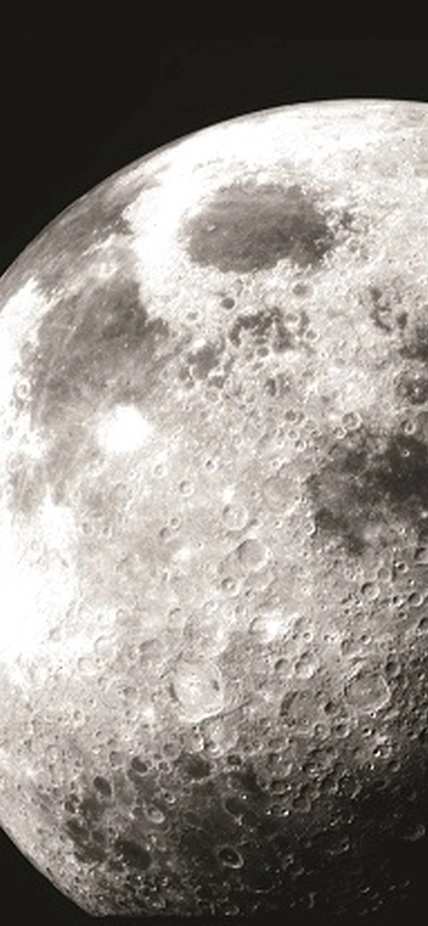Several of our geochemistry, cosmochemistry, and astrobiology experts at Carnegie's Department of Terrestrial Magnetism and Geophysical Laboratory study the Moon—how it formed and the source of its water and minerals. For Moon day, we're taking a look back at some of our favorite Carnegie Moon news from the past few years. Take a look!
Research may solve lunar fire fountain mystery
Tiny beads of volcanic glass found on the lunar surface during the Apollo missions are a sign that fire fountain eruptions took place on the Moon’s surface. Now, scientists from Brown University and the Carnegie Institution for Science have identified the volatile gas that drove those eruptions. MORE
__________
Where on Earth did the Moon's water come from?
Water is perhaps the most important molecule in our Solar System. Figuring out where it came from and how it was distributed within and among the planets can help scientists understand how planets formed and evolved. New research from a team including Carnegie’s Erik Hauri demonstrates that water from the interiors of the Earth and Moon has a common origin. MORE
__________
Man in the Moon looking younger
Earth’s Moon could be younger than previously thought, according to new research from a team that includes Carnegie’s Richard Carlson and former-Carnegie fellow Maud Boyet. MORE
__________
Scientists find Moon whiskers
Up to now scientists thought that the trace amounts of carbon on the surface of the Moon came from the solar wind. Now researchers at the Carnegie Institution’s Geophysical Laboratory have detected and dated Moon carbon in the form of graphite—the sooty stuff of pencil lead—which survived from the late heavy bombardment era 3.8 billion years ago. The researchers found instances of graphite and a form of rolled graphite called graphite whiskers that could only form in very high temperature reactions initiated by an impact. The discovery also means that the Moon potentially holds a record of the meteoritic carbon input to the Earth-Moon system, when life was just beginning to emerge on Earth. MORE
__________
Moon whets apetite for water
Scientists at the Carnegie Institution’s Geophysical Laboratory, with colleagues, have discovered a much higher water content in the Moon’s interior than previous studies. Their research suggests that the water, which is a component of the lunar rocks, was preserved from the hot magma that was present when the Moon began to form some 4.5 billion years ago, and that it is likely widespread in the Moon’s interior. MORE
__________
Modeling the Moon-forming impact
Miki Nakajima developed a code that she uses to simulate Moon-forming collision scenarios, including this one between a Mars-sized impactor and Earth, which creates a disk around the planet from which the Moon accretes. MORE
